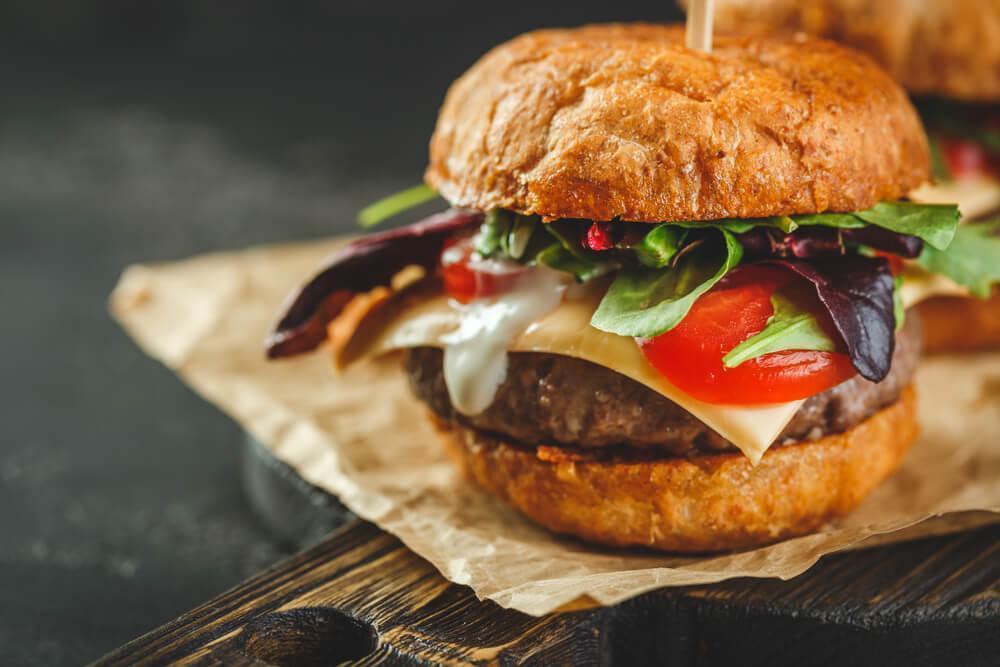
Whether you’re a meat eater or not, just about everybody loves a juicy, flavorsome burger. However, with all of those extra toppings and condiments that are so tempting to add on, it’s easy to see how burgers got the reputation of being an unhealthy food.
If you’ve been trying to eat healthier, don’t worry – the good news is, you don’t have to give up burgers! Instead, here are ten sneaky methods that you can use to make a burger healthier, while still tasting amazing.
Go for Lean Meat
The mince used to make burgers can usually be classed as either lean or fatty. It goes without saying that if you are trying to make your burger healthier, lean is the way to go.
You might be thinking…
But lean meat dries out easily – I want my burger to be juicy!
You’re right in thinking that lean meat dries out faster, so this is where some discerning shopping comes in…
If you’re going for beef, choose a 90% fat-free lean ground sirloin patty. You could opt for something even leaner, but, as mentioned, you run the risk of a dry burger. To avoid this, handle the meat as little as possible when you’re cooking the burger, and never press down on them with your spatula, as you don’t want all of that natural juice to be wasted in the pan.
Swap White for Whole Wheat
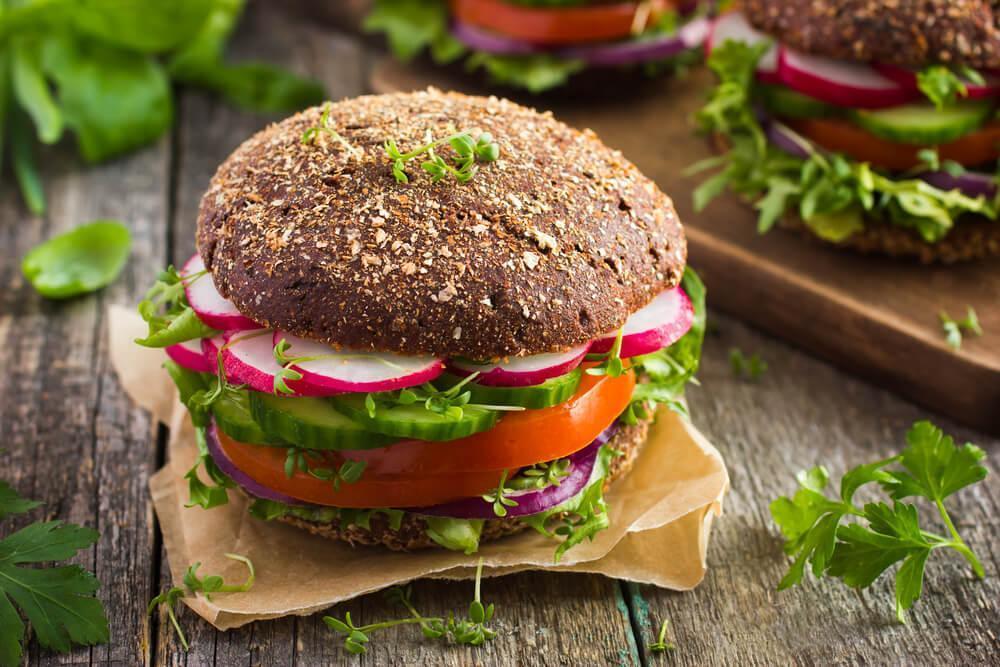
Let’s face it, for many burgers, the bread is somewhat of an afterthought. Yes, it serves the all-important purpose of holding the burger together, but, with so many other flavors in there, it’s often pretty hard to actually taste the bread itself.
So, one sneaky but easy way to make a burger healthier would be to swap out the white buns for whole wheat versions. These are now widely available in stores, or, if you wanted to go the extra mile, you could even make your own!
In addition to serving their purpose as a tasty burger bun, whole wheat buns also bring with them a few extra health benefits, such as:
- A lowered risk of heart disease, diabetes and stroke
- A boost of nutrients and fiber
- Reduced inflammation in your body
Look Into Traditional Burger Bun Alternatives
Just because burgers are traditionally made with a round bread bun doesn’t mean that yours have to be!
There are so many alternatives out there to the traditional burger bun, with most of these being significantly healthier. Yes, you could always go for the no-bun option, but, as mentioned above, a burger bun does serve a purpose.
Wondering what you could use instead of a traditional burger bun?
Here are some options:
- Large pieces of Romaine lettuce that can be used to wrap the burger and fillings
- Portobello mushrooms
- A large slice of eggplant
- Red peppers
- Cloud bread
So long as the “bun” you choose is firm enough to contain the burger without getting soggy and falling apart, then you may as well give it a try!
Get Creative with Lettuce
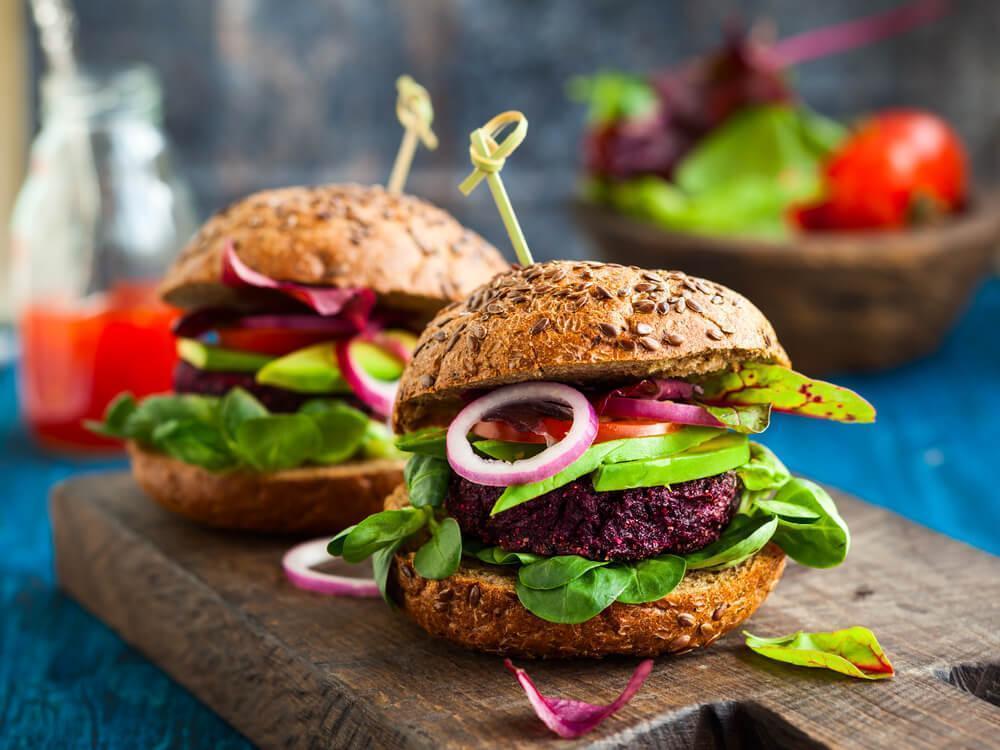
While some may add a few lettuce leaves into their burgers for the extra nutrients, most salad added into a burger typically serves the purpose of providing some extra texture. Think about that crisp crunch you get each time you bite into those lettuce leaves sandwiched in with your burger – that texture can really be a gamechanger when it comes to creating the ultimate burger!
Many tend to choose iceberg when picking a burger lettuce, but this is actually one of the least nutritional greens out there. Yes, it adds a good crunch, but so do many other, much healthier, options:
- Spinach – packed with vitamins and high amounts of iron
- Broccoli leaves – you may usually throw these out, but try adding them into a burger for a boost of protein, fiber and vitamin A
- Romaine – a great source of vitamin A, as well as some of the B vitamins
- Butter lettuce – many would say that this is the most nutritious out of all of the lettuces, containing high amounts of folate, potassium and iron
- Chard – just one cup provides almost 300% of your daily vitamin K intake, along with high amounts of magnesium. Go for baby chard leaves when using them raw in a burger, since these are the most tender
Sneak in Some Unexpected Vegetables
Now that you’re clued up on the alternatives to iceberg, let’s turn our attention to some of the other vegetables you could sneak into your burger.
The key is to make sure that they each add something when it comes to flavor or texture, but without being overwhelming and overpowering.
So, a few raw tomato slices, or some fried onions, are usually pretty popular, but how about getting a little more creative with the vegetables you add in?
Try layering in some grilled vegetables for a smoky flavor and juicier texture. Grilled peppers, onions, mushrooms, and even zucchini all work well in a burger, and grilling is a much healthier cooking method than frying. If you don’t have a grill, roasting would work just as well.
Sliced raw fruits can also often add that extra special touch to a burger. Pineapple is a common one, as is avocado, but you could also opt for something even more unusual, such as peaches, apples or mango.
Be Careful with Condiments

Are you guilty of adding lashes of mayo or ketchup to your burgers?
Many are, and while both may offer so much when it comes to flavor, they are also packed with calories, sugars and unhealthy fats.
Fortunately, there are plenty of healthier, and probably even tastier, alternatives that you could use instead.
Try swapping your ketchup for a fresh salsa. This doesn’t need to take long to make – just roughly chop up some tomatoes, onions, and anything else you may have on hand (sweetcorn, peppers, etc.), and then mix together before adding onto your burger. If you’re short on time, a jar of salsa works well too, just make sure that you pick something that is actually healthier than the ketchup you would have otherwise used!
Wondering what you could swap mayo with?
The closest alternative when it comes to texture, tanginess and creaminess would be Greek yogurt. Even if you didn’t want to completely lose your mayo, you could always just mix equal parts mayo with Greek yogurt, for a slightly healthier version of mayo.
If you don’t have any Greek yogurt to hand, try one of the following:
- Hummus
- Pesto
- A nut buter
Avocado is another popular one – you could simply mash one up and then slather it over your burger, or you could turn it into a delicious guacamole.
Sprinkle in Some Herbs and Spices
Burgers are usually made with minimal herbs and spices. Salt and pepper are a must, but many tend to stop at that when creating burger patties.
This is such a wasted opportunity, because not only will the right herbs and spices add so much in terms of overall flavor, but they are also packed with powerful doses of vitamins and antioxidants, all of which everyone could do with consuming more of.
Of course, you still want your burger to taste good, so you need to be selective about the herbs and spices you choose. Here are some lip-licking options:
- Oregano – one of the best herb sources of antioxidants
- Rosemary – a powerful anti-inflammatory that also helps with digestion and protects against brain aging
- Thyme – contains high amounts of vitamin C, as well as a good amount of vitamin A
- Sage – contains a wide range of vitamins and minerals, and also protects against certain types of cancers
- Mustard – high in trace minerals that help with everything from arthritis to migraines
- Red pepper flakes – good for boosting metabolism, lowering blood pressure and improving digestive health
You could either mix these herbs into your patty mixture before forming your patties, or, if you have purchased pre-made patties, either sprinkle the herbs on top, or mix them into the vegetables and condiments you plan on adding into your burger.
Go Veggie
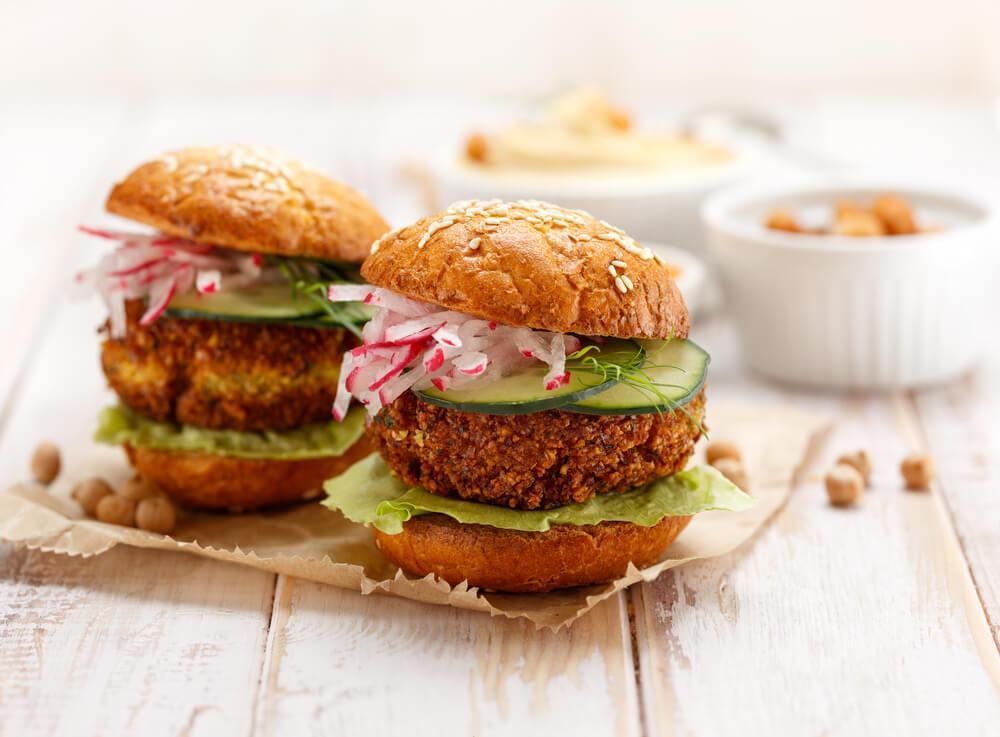
If you’re an avid meat-eater, then you’re probably getting prepared to scroll on by and completely skip this section, but don’t do that just yet…
You don’t need to always swap your meat patty for a vegetarian one, but here are a few reasons to convince you to do that just occasionally:
- If they are made with a wide variety of vegetables, then they will contain a fantastic selection of vitamins and minerals
- Vegetables are a great source of fiber, which, as noted above, provides some great health benefits
- Veggie burgers are much better for the environment
However, there is a downside to a pre-made veggie burger patty…
They usually contain high amounts of sodium, as well as saturated fats. The best way to get around this would be to make your own, as this gives you total control over everything that goes in to your burger.
Alternatively, you could also simply opt for cooked whole vegetables as a replacement for a patty. A portobello mushroom works really well for this, as do thick slices of aubergine or zucchini.
Try a Different Cheese
Dairy products are becoming pretty controversial, especially with an increasing number of studies emerging proving that dairy products can have some negative health effects. From increasing cholesterol to triggering inflammation, more and more people are now looking for alternatives to dairy.
This is great when it comes to sneakily making a burger healthier, because there are now so many dairy cheese alternatives that work really well in a burger. Just like dairy cheese, these vegan versions melt beautifully, meaning that, when mixed in with all of the other flavors in your burger, you would have no idea that the cheese you’re eating is anything different from the norm.
Don’t want to give up your dairy just yet?
That’s okay, just pick a healthier cheese for your burger instead. Yes, that’s right, some cheeses are actually far healthier than others, making these the ones to go for. Here are some of the healthiest cheeses you could choose:
- Mozarella – has a high moisture content and is also a good source of probiotics
- Blue cheese – contains more calcium than other cheeses
- Feta – low in calories, but can be high in sodium
- Cottage cheese – higher in protein than other cheeses, while low in calories too
- Parmesan – packed with a variety of different nutrients, while also being low in lactose, due to its long aging process
Patty Size Portion Control
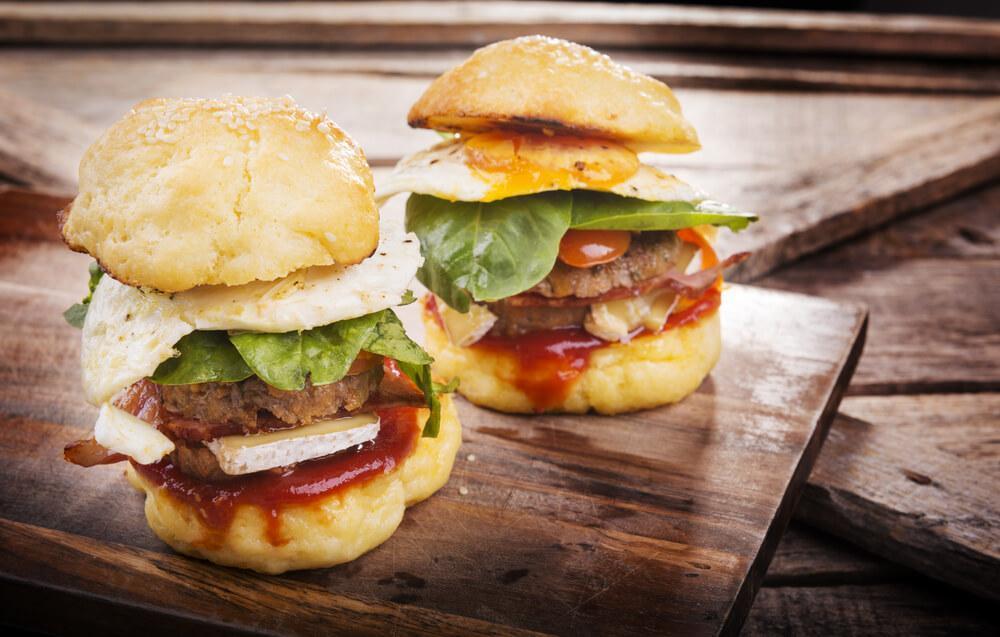
If you’re worried about calories and over-eating, this is a simple way to practice portion control when it comes to burgers – all you need to do is make sure that the patty size you cook up isn’t too big.
Ideally, a burger should be about four ounces while raw, which will shrink down to around three ounces after it has been cooked. This may not seem like much, but, when you combine it with all of the other (healthy) things that you could add to your burger, four ounces is all you need for a filling, balanced and satisfying meal.
Of course, if you are purchasing pre-made patties, then portion control can be a little more difficult. However, you could always cut a regular-sized patty in half, or perhaps even cut a third of it off, and put that extra piece in the freezer. Then, once you’ve collected up a few of them, you could use those to make sliders.
Burgers don’t need to be unhealthy – they only gained that reputation due to fast food chains. Instead, burgers can actually be quite the gourmet dish, bringing together a wide range of flavors and textures for an unforgettable meal. So long as you stay in full control over each of the elements that make up your burger, it is surprisingly easy to make a burger really healthy.

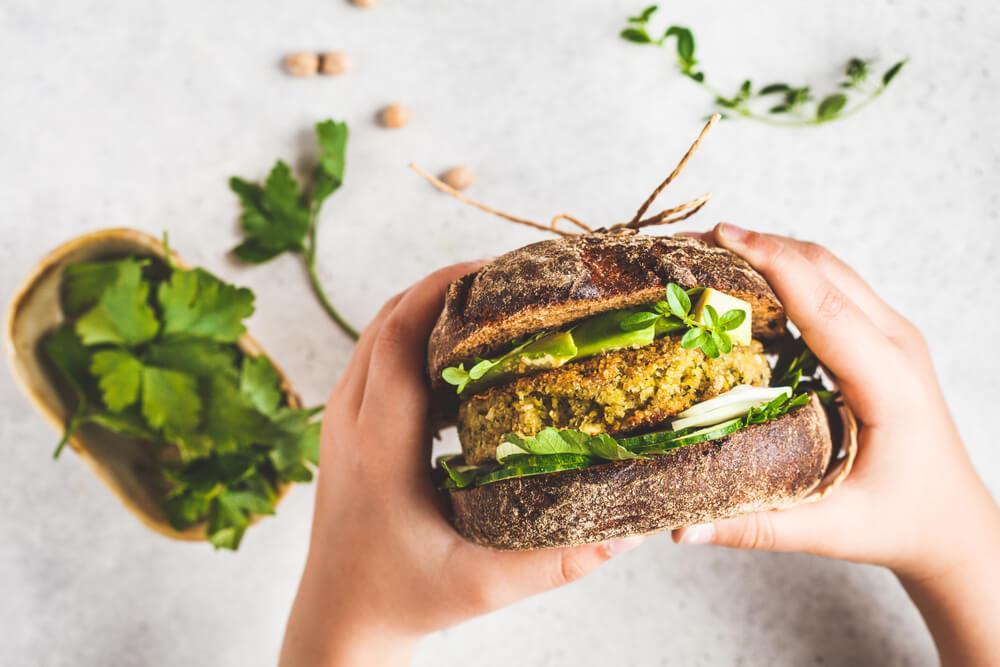




Leave A Comment